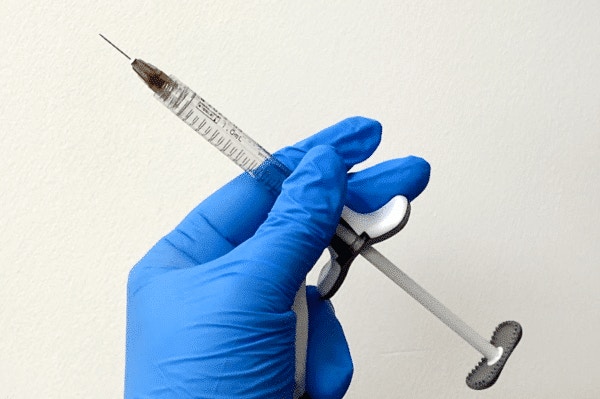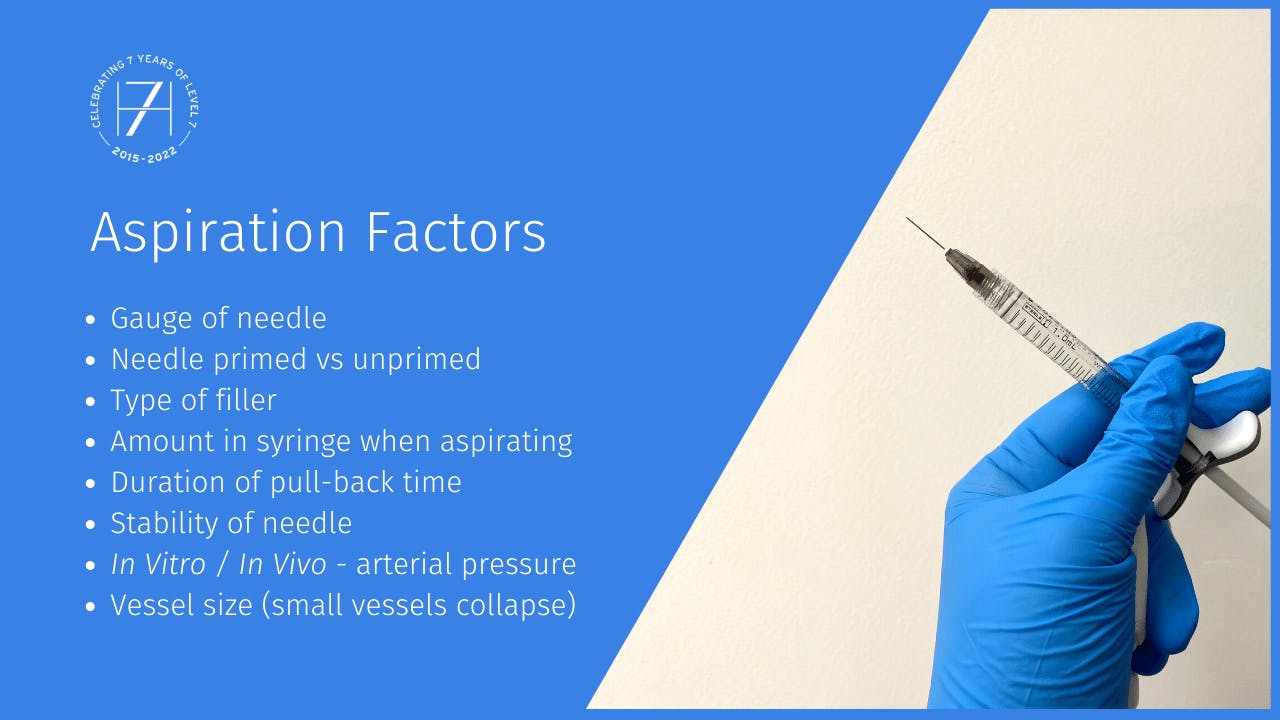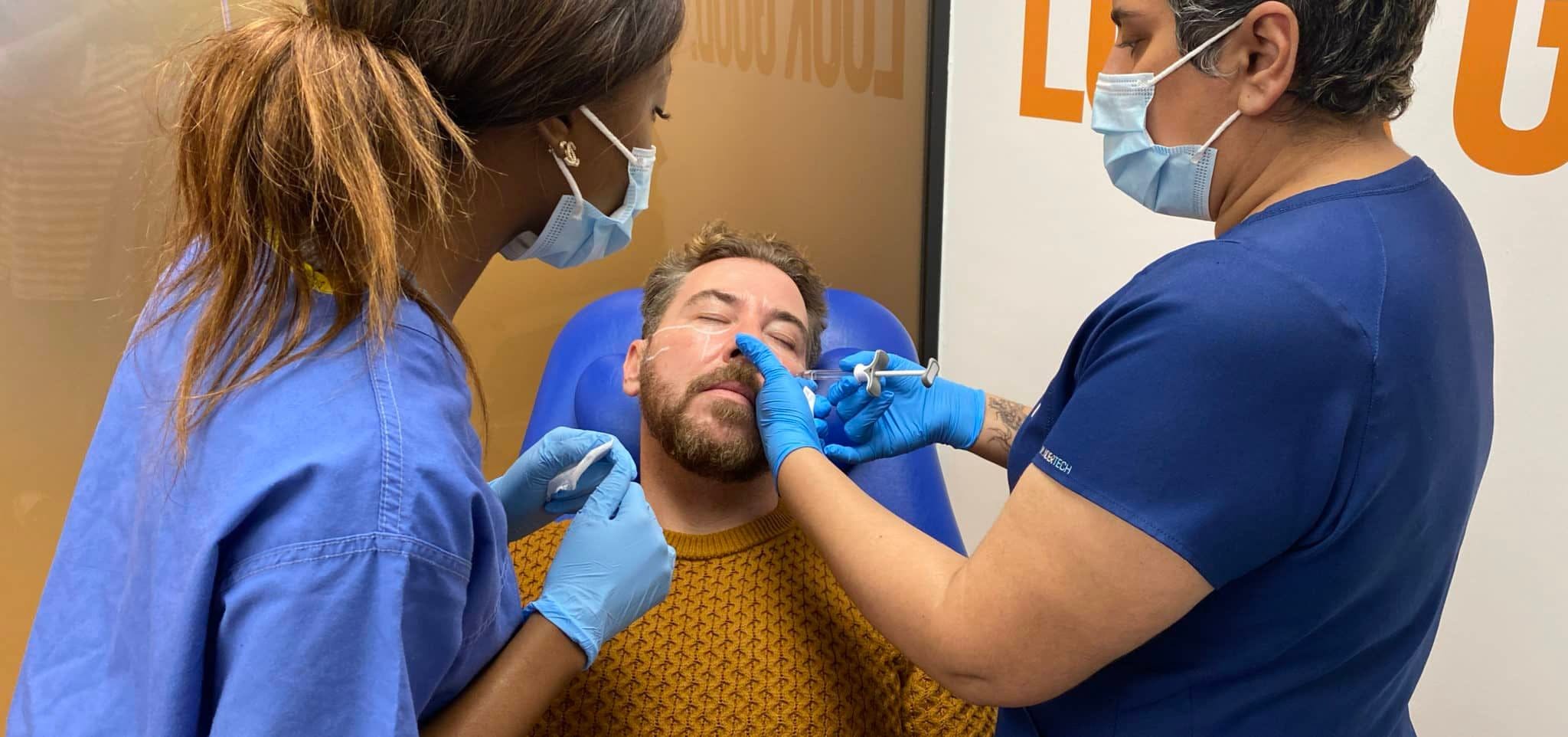Should Aesthetics Practitioners Aspirate?

“Should aesthetics practitioners aspirate?” – it’s a controversial question and one there is no right answer to.
This debate seems to firmly split healthcare professionals down the middle with very distinct ‘yes’ and ‘no’ camps.
Dr Tristan Mehta is renowned for his pioneering approach to safety standards within aesthetics. He is the founder of Harley Academy and the creator of the Ofqual regulated Level 7 in injectables – the gold standard in postgraduate aesthetics courses in the UK.
We asked him for his opinion on whether aesthetics practitioners should aspirate and he had quite a novel take!
Watch Dr Tristan explain his views on aspirating in the following video, or scroll down to read what he has to say…
DR TRISTAN MEHTA EXPLAINS WHY HE DOESN'T ASPIRATE BUT BELIEVES YOU NEED TO BE TAUGHT THIS TECHNIQUE
“I’m of the camp of not aspirating, but I think as we train and teach beginners, we need to be able to teach the ability to aspirate,” he says.
“That’s because the industry hasn’t quite decided – the evidence hasn’t quite been finalised on either side of the fence to aspirate or not.”
Trainees on all Harley Academy aesthetics courses – from Foundation Training to Level 7 Diploma – are taught to aspirate. We also expect all our students to aspirate during their mentoring sessions, as part of their practical injecting education.

THE APPROACH DR TRISTAN BELIEVES IS A BETTER INDICATOR OF SAFETY
“For me and my practice, the best way to mitigate any serious adverse events for injectables is to inject very small quantities,” advises Dr Tristan. “Also move the needle tip frequently.”
“I think that’s more reassuring than a negative aspirate followed by a significant bolus,” he notes. “For me, that’s a little bit risky in terms of relying on that aspiration as a form of safety.”

IF YOU ARE GOING TO ASPIRATE, BEAR THESE CONSIDERATIONS IN MIND...
You should apply this to every area you inject
It cannot replace other safety measures
Know that it may preclude you from other safety measures such as movement.
Dr Tristan’s approach in summary…
Inject less than 0.1ml with a needle
Constantly move the needle
Inject perpendicular to the vessels
Inject with the bevel down, at an acute angle, to avoid multiple tissue planes
Low pressure, low volume
Use a 25g cannula or larger
Use small, sharp needles
Aspiration is not enough.

LEARN MORE ABOUT ASPIRATING AS A NEW AESTHETICS PRACTITIONER
At Harley Academy, your aesthetic medicine training will include aspirating in both practical and theoretical terms.
Once you fully understand the technique, you can make your own informed decision as to whether you aspirate in your own practice.
For further information and advice on this, check out our New Injector’s Guide to Aspirating.
If you’d like to explore a career in aesthetic medicine and are interested in finding out more, join our next Aesthetics Careers Open Evening event.
You can come along in person or join remotely via Zoom to listen to our experts talk through their journey from the NHS to full time roles in aesthetics.
They’ll take you through frequently asked questions, the training and mindset you need to succeed and where the career opportunities are. You’ll also get to watch a live injectables treatment demonstration.
This free event is a fantastic resource for anyone considering making the move into medical aesthetics.
All information correct at the time of publication
Download our full prospectus
Browse all our injectables, dermal fillers and cosmetic dermatology courses in one document
By submitting this form, you agree to receive marketing about our products, events, promotions and exclusive content. Consent is not a condition of purchase, and no purchase is necessary. Message frequency varies. View our Privacy Policy and Terms & Conditions
Attend our FREE open evening
If you're not sure which course is right for you, let us help
Join us online or in-person at our free open evening to learn more
Our Partners














STAY INFORMED
Sign up to receive industry news, careers advice, special offers and information on Harley Academy courses and services

